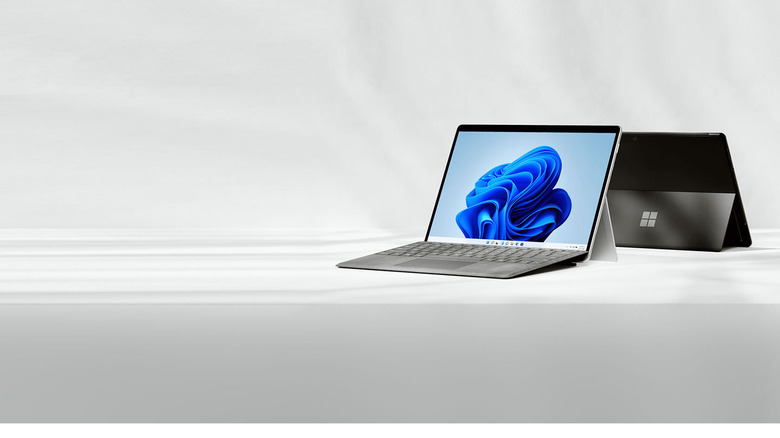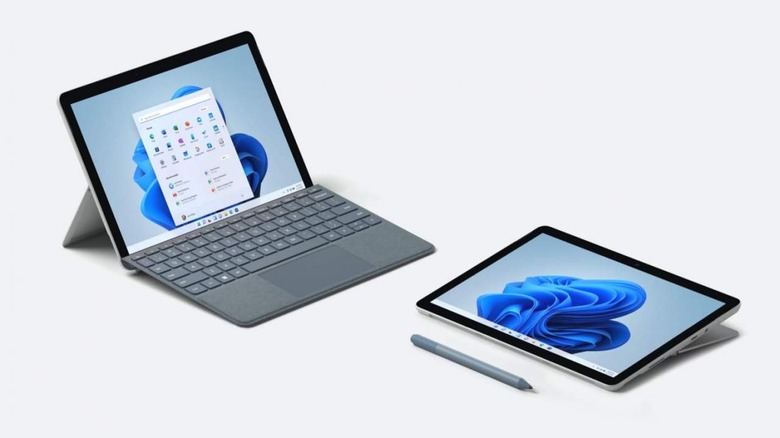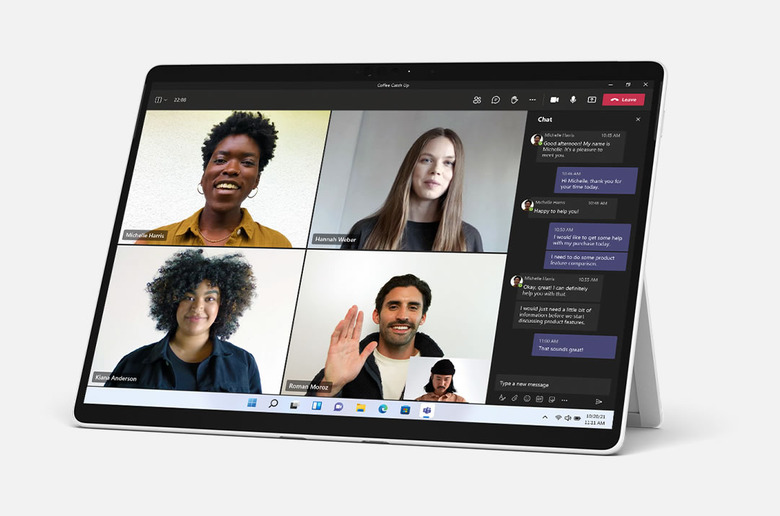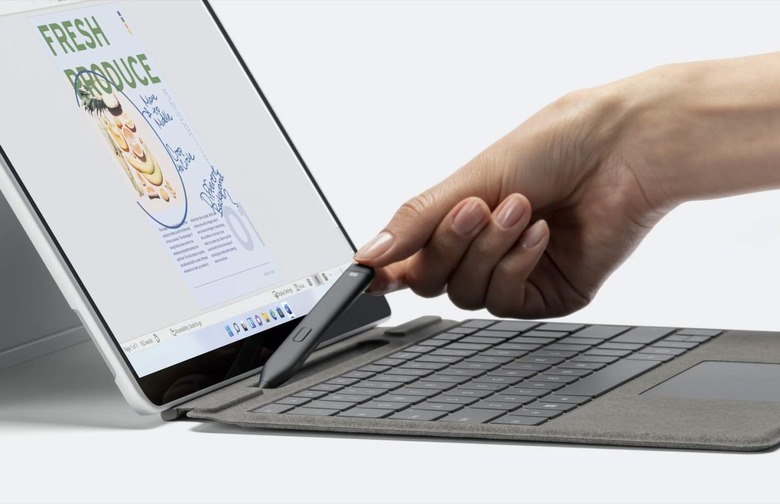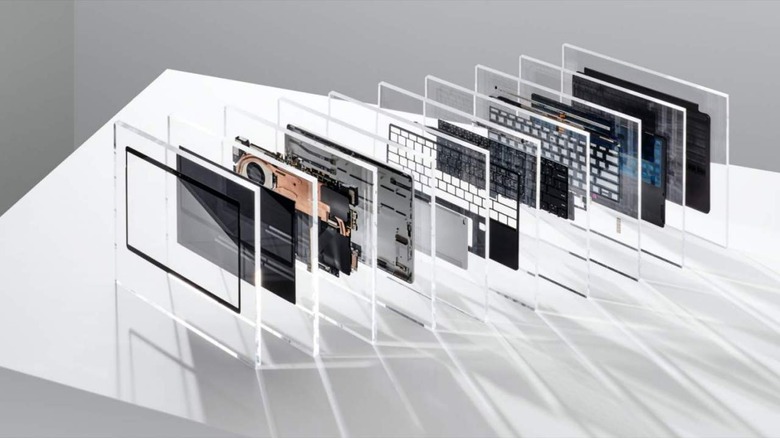Microsoft Surface Pro 8 - Why The 2-In-1 Tablet Matters
Microsoft introduced new versions of mainstream devices that were due and also made some surprise announcements at the latest Surface hardware event. The limelight was stolen by the Surface Pro 8, a 2-in-1 tablet, which brings massive upgrade to the Surface Pro lineup powered by Intel.
The tablet gets one of the most significant upgrade since the Surface Pro 3 introduced in 2014, and highlighting changes as compared to the Surface Pro 7 that hit the market in October 2019. The Pro 8 is a major overhaul on the inside as well as outside – that's why it matters when pitted against competitors.
Design and display
The Surface Pro 8 gets a refreshing new, sleek form factor that's akin to modern gadgets. Still it has the same anodized aluminum casing and we are not complaining. Gone are the thick bezels which give way to the toned design with 11-percent larger screen real estate at 13-inches, as compared to the 12.3-inches on the predecessor. The bezels at the top are there to accommodate the webcam and at the bottom for the Type Cover to rest on the tablet.
Kickstand on the device can swivel 165 degrees for you to get better flexibility in viewing. Thanks to the Type Cover, the Signature Keyboard more or less resembles the Surface Pro X keyboard. It attaches to the Surface Pro 8 magnetically – with the ability to double as storage and a charger for the Surface Pen 2. Just like the Surface Pro 7, this one too will come in two color options – Platinum and Graphite.
Coming on the display, the 2-in-1 tablet sees a bump up in resolution at 2880 x 1920 (267 PPI) with 3:2 aspect ratio. According to Microsoft's claim, the display on this one is 12.5-percent brighter and more responsive than the earlier models. The 13-inch PixelSense screen comes with Dolby Vision and Adaptive Color technology which promises sublime content viewing on the device.
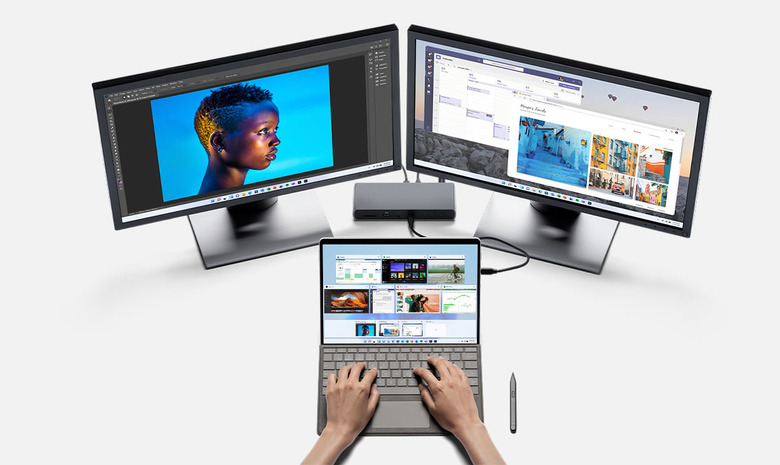
The biggest plus comes in the form of an upgrade in the screen refresh rate that goes from 60Hz to 120Hz. By default the screen is set to 60Hz, but can be toggled up to 120Hz for a smoother experience. Thanks to Windows 11 Dynamic Refresh Rate feature, the display's refresh rate can also fluctuate automatically based on the content being viewed. At the Surface event, Microsoft did mention the "GPU ink acceleration" which will come in handy for web browsing or moments when you are using the Surface Pen.
Performance and features
The 10th-gen Ice Lake processors now gives way to the 11th-gen Tiger Lake CPU in the Surface Pro 8. This brings almost double the graphics power with the new CPU – as there is 40-percent elevation in CPU performance and 74-percent faster graphics sustained performance.
The consumer version of the machine will come in two options – the Intel Core i5-1135G7 and Intel Core i7-1185G7 variant. While on the other hand the commercial models will get the additional Core i3-1115G4 processor and the Intel Core i5-1145G7 variants. Microsoft has opted for integrated graphics with Intel Iris Xe on the 11th-gen Intel Core i5 and i7 versions.
The Intel Core i3 version gets the Intel UHD graphics though. There is the options to choose 8GB, 16GB or 32GB RAM for the device and the storage configuration of 128GB, 256GB, 512GB or 1TB in SSD storage. This will however depend on whether you choose Wi-Fi or LTE model.
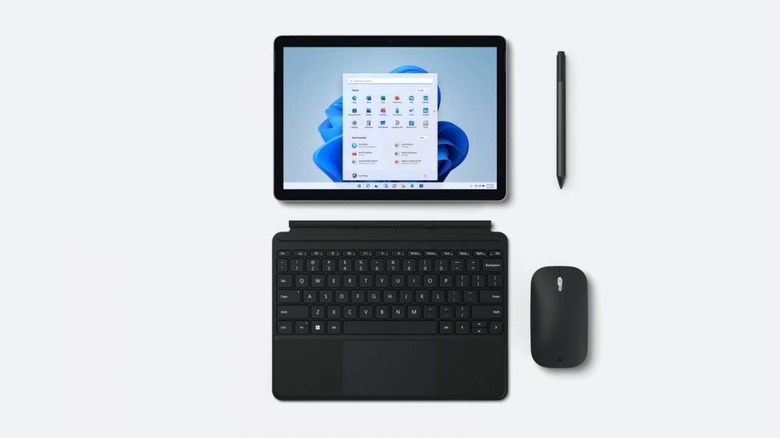
All these variants should be good enough for casual gaming, video editing and multitasking. For more graphic power, users can opt for external GPU connectivity via the two USB-C Thunderbolt 4 ports. Along with this, the tablet has 3.5mm jack and Surface connect port for connectivity with external displays.
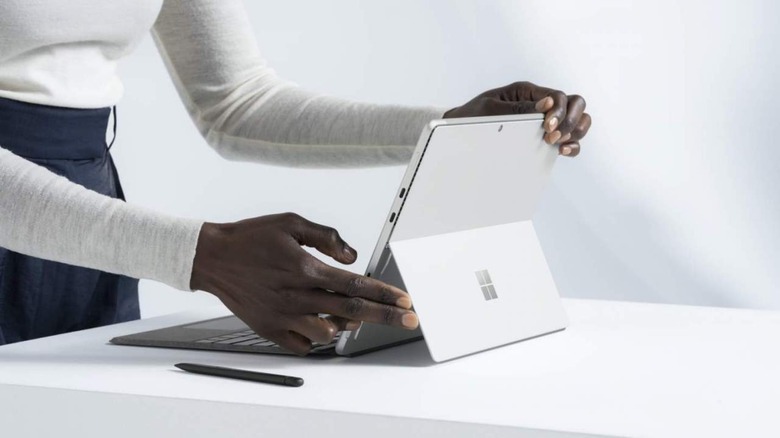
The Surface Pro 8 will come with Surface Slim Pen 2 support. The accessory brings tactile signals and zero force inking into play for the device which employs haptic motor and vibrations to enable a real pen and paper like experience while writing with the accessory.
Cameras and battery life
To take on the highly competitive market, Microsoft had to improve the cameras on the Surface Pro 8. There are no highlighting improvements, but enough to keep buyers interested. The rear-facing camera module gets an upgrade, as it now offers 10MP camera at 1080p HD and 4K video resolution. The low light shooting capability has improved keeping in mind the device will be used for video calls. The front-facing shooter is same at 5MP with 1080p full HD video resolution.
The Surface Pro 7 was a big disappointment with an underwhelming battery performance of around eight hours. If we go by Microsoft's official claims, the battery life has also now doubled to almost 16 hours on single charge. Via the Surface Connect port the tablet can juice up 80-percent in around an hour's time.
Release date and price
Surface Pro 8 is scheduled to release on October 5 in select markets, and it is up for pre-order right now on the Microsoft Store and Best Buy. The Windows 11-powered device will carry a starting price tag of $1,099 – around $300 more than the launch price of Surface Pro 7. The top variant comprising Intel Core i7, 32GB RAM and 1TB configuration will set you back $2,599.99.
Teachers, students and military personnel can get the Surface Pro 8 for an introductory discount, which is another thing to keep in mind. The Surface Slim Pen 2 can also be pre-ordered for $129.99. Microsoft has not confirmed the shipping dates for now, but that should be up soon on their website.
Final thoughts
Microsoft has definitely hit the right notes with the Surface Pro 8, which looks made for 2021, both in athletic design and function. The hybrid device has powerful hardware and the complementing OS features that make the device worth consideration. Battery life has been hugely improved, and that is a big plus for power users. So, no matter if you are a student, creative editor or business tycoon; the 2-in-1 tablet has enough to satiate your needs.

